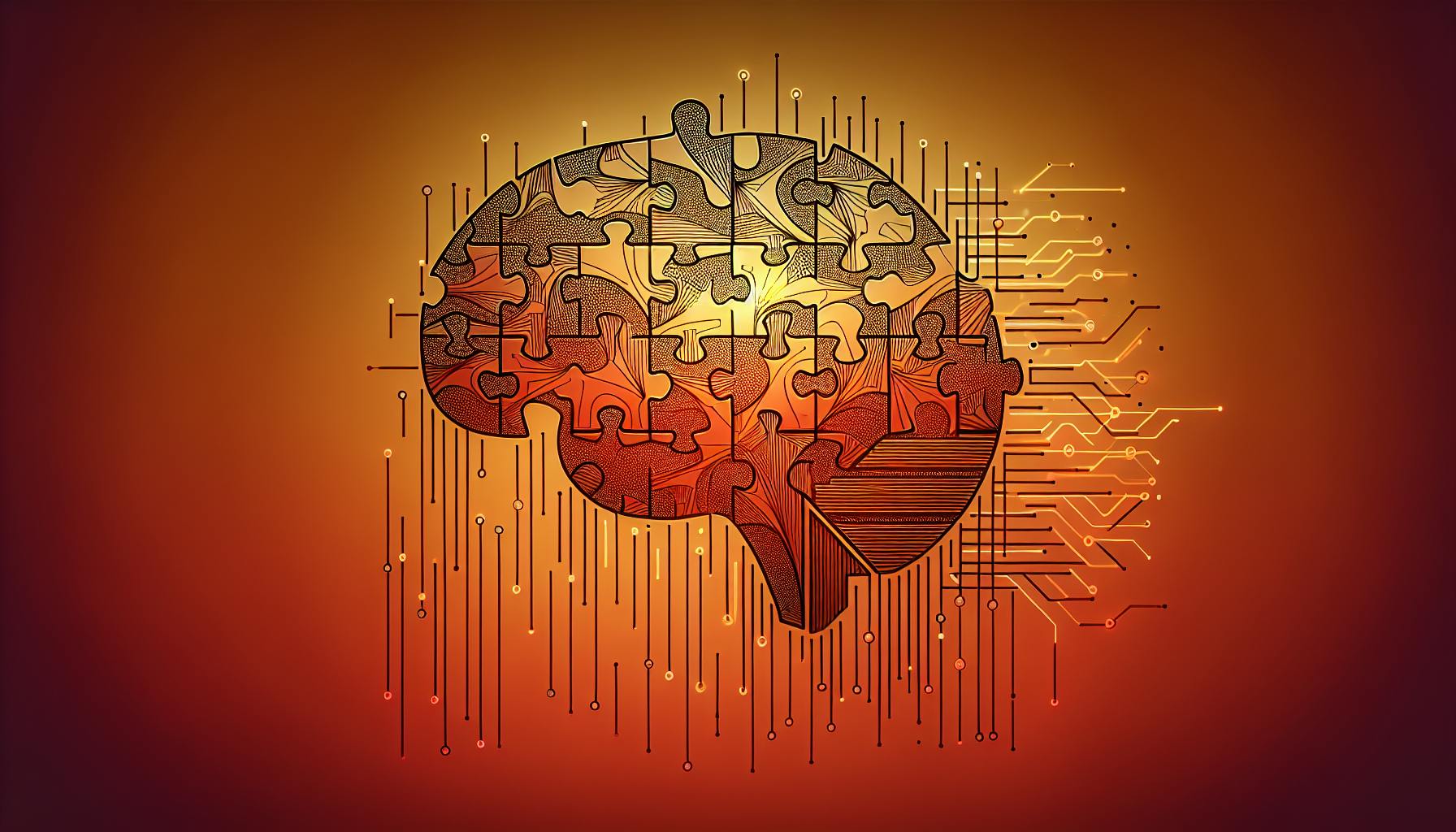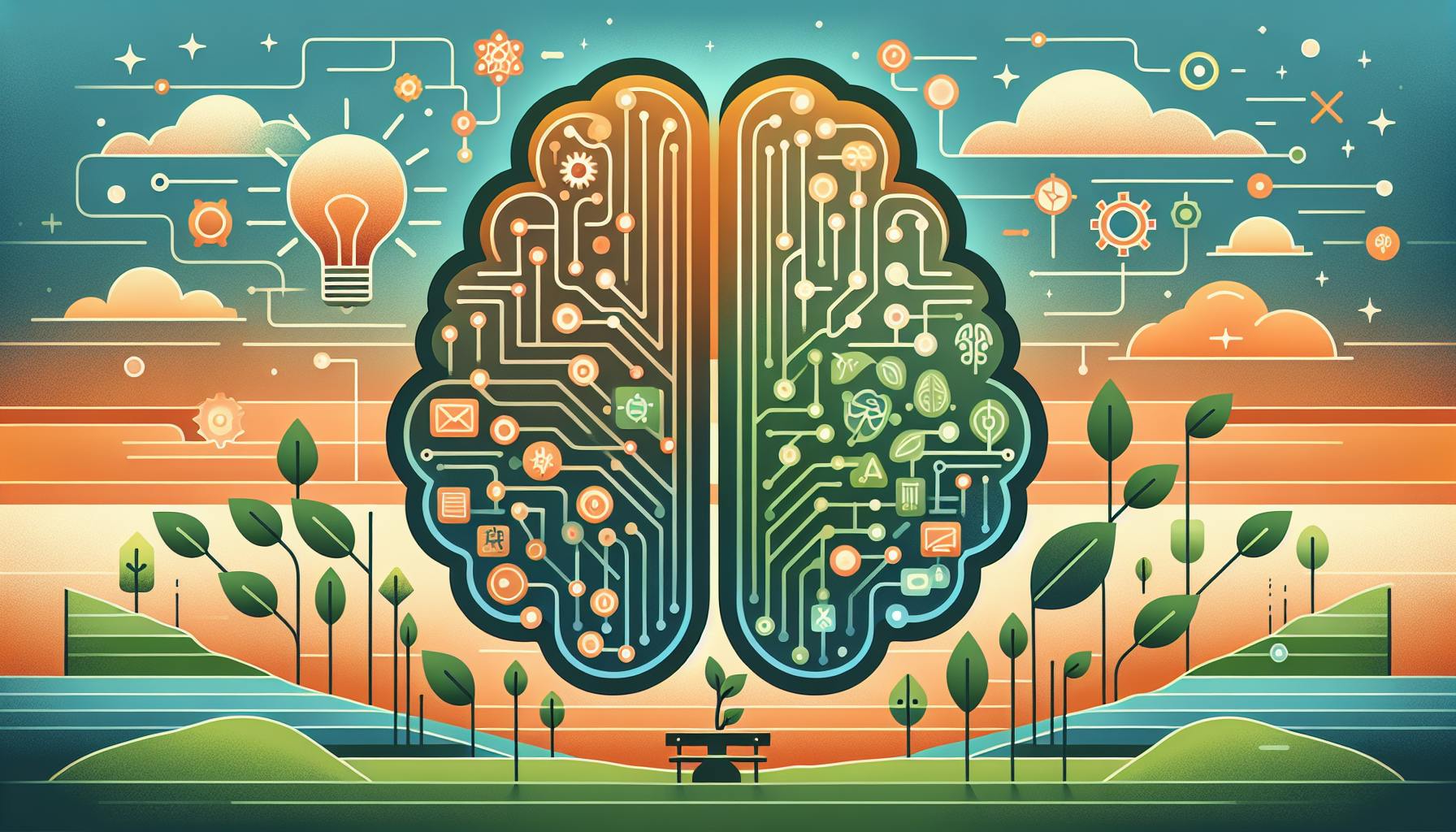Chatbots have become crucial for businesses to provide instant customer support. To ensure their effectiveness, it's essential to monitor their performance through real-time analytics. Here are the 10 key chatbot metrics to track:
-
Goal Completion Rate (GCR): Measures the percentage of users who successfully complete a task or goal while interacting with your chatbot.
-
Conversation Length: Measures the average number of exchanges between a user and your chatbot, indicating conversation flow efficiency.
-
Bounce Rate: Measures the percentage of website visitors who leave immediately after landing on a page without interacting with your chatbot.
-
User Satisfaction: Measures how happy customers are with your chatbot's performance, affecting customer loyalty and retention.
-
Escalation Rate: Measures the percentage of chatbot interactions that require human intervention.
-
Response Time: Measures how long it takes for your chatbot to respond to a user's query or message.
-
Missed Utterances: Measures the percentage of user inputs that your chatbot fails to understand or respond to.
-
Retention Rate: Measures the percentage of users who return to interact with your chatbot within a specific period.
-
Conversion Rate: Measures the percentage of users who complete a desired action, such as making a purchase or filling out a form, after interacting with your chatbot.
-
Non-Response Rate: Measures the percentage of user queries that your chatbot fails to answer.
By tracking these metrics, you can identify areas for improvement, refine your chatbot's performance, enhance user satisfaction, and drive business objectives.
Related video from YouTube
1. Goal Completion Rate (GCR)

What is Goal Completion Rate (GCR)?
Goal Completion Rate (GCR) measures the percentage of users who successfully complete a specific task or goal while interacting with your chatbot.
How to calculate GCR:
| Formula | Calculation |
|---|---|
| GCR | (Number of successful goal completions ÷ Total number of user interactions) × 100 |
Example:
If your chatbot successfully resolves 800 out of 1,000 customer interactions, the goal completion rate would be 80%.
What does GCR indicate?
A high GCR indicates that your chatbot is efficiently meeting user needs, reducing the need for human intervention, and ultimately contributing to customer satisfaction. On the other hand, a low GCR may indicate that your chatbot requires improvement in understanding user requests or providing relevant solutions.
Why track GCR?
By tracking GCR, you can identify areas for improvement, refine your chatbot's conversation flow, and enhance its ability to complete user goals efficiently.
2. Conversation Length
What is Conversation Length?
Conversation length measures the average number of turns or exchanges between a user and your chatbot. This metric helps you understand how engaging and effective your chatbot's conversation flow is.
Why track Conversation Length?
Tracking conversation length is essential to identify areas where your chatbot can improve. A shorter conversation length may indicate that your chatbot is efficiently resolving user queries, while a longer conversation length could suggest that your chatbot is struggling to understand user requests or provide relevant solutions.
How to optimize Conversation Length?
To optimize conversation length, focus on the following:
| Optimization Strategies | Description |
|---|---|
| Streamline conversation flows | Ensure your chatbot's conversation flow is logical, concise, and easy to follow. |
| Improve intent recognition | Enhance your chatbot's ability to recognize user intent and respond accurately. |
| Provide clear and concise responses | Ensure your chatbot's responses are clear, concise, and relevant to the user's query. |
By tracking and optimizing conversation length, you can refine your chatbot's conversation flow, reduce user frustration, and ultimately improve customer satisfaction.
3. Bounce Rate

What is Bounce Rate?
Bounce rate measures the percentage of website visitors who leave your site immediately after landing on a page, without taking any further action or interacting with your chatbot.
Why track Bounce Rate?
Tracking bounce rate helps you identify areas where your chatbot can improve. A high bounce rate may indicate that your chatbot is not providing relevant information or assistance, leading to user frustration and a negative experience.
How to optimize Bounce Rate?
To optimize bounce rate, focus on the following strategies:
| Optimization Strategies | Description |
|---|---|
| Place chatbot on high-bounce-rate pages | Provide timely assistance and improve user retention. |
| Improve user experience | Ensure your chatbot's conversation flow is logical, concise, and easy to follow. |
| Provide relevant information | Ensure your chatbot provides accurate information, addressing user queries. |
By tracking and optimizing bounce rate, you can refine your chatbot's conversation flow, reduce user frustration, and ultimately improve customer satisfaction.
4. User Satisfaction
What is User Satisfaction?
User satisfaction measures how happy your customers are with your chatbot's performance. It directly affects customer loyalty, retention, and ultimately, your business's revenue.
Why track User Satisfaction?
Tracking user satisfaction helps you identify areas where your chatbot can improve. A low user satisfaction score may indicate that your chatbot is not providing relevant information or assistance, leading to user frustration and a negative experience.
How to measure User Satisfaction?
You can measure user satisfaction through:
| Method | Description |
|---|---|
| Surveys and Feedback | Collect feedback from users through surveys, ratings, or direct messages. |
| CSAT (Customer Satisfaction) Score | Calculate the percentage of users who are satisfied with your chatbot's performance. |
| NPS (Net Promoter Score) | Measure the likelihood of users to recommend your chatbot to others. |
How to improve User Satisfaction?
To improve user satisfaction, focus on:
| Improvement Strategies | Description |
|---|---|
| Provide accurate information | Ensure your chatbot provides up-to-date and accurate information, addressing user queries. |
| Personalize the conversation | Use user data to tailor chatbot conversations for more personalized interaction, increasing user engagement and satisfaction. |
| Optimize conversation flow | Design the chatbot's conversation flow to be intuitive and straightforward, avoiding complex navigation that can confuse users. |
By tracking and improving user satisfaction, you can refine your chatbot's performance, reduce user frustration, and ultimately, increase customer loyalty and retention.
5. Escalation Rate
What is Escalation Rate?
Escalation rate measures the percentage of chatbot interactions that require human intervention. This metric helps you identify areas where your chatbot needs improvement and optimize your escalation process.
How to calculate Escalation Rate?
| Formula | Calculation |
|---|---|
| Escalation Rate | (Number of escalated interactions ÷ Total number of interactions) × 100 |
Why track Escalation Rate?
Tracking escalation rate helps you:
- Identify areas where your chatbot struggles to provide accurate information or assistance
- Optimize your escalation process to reduce the workload of human agents
- Improve the overall customer experience by providing timely and effective support
By monitoring and optimizing your escalation rate, you can refine your chatbot's performance, reduce the need for human intervention, and ultimately, increase customer satisfaction and loyalty.
sbb-itb-b2c5cf4
6. Response Time
What is Response Time?
Response time measures how long it takes for a chatbot to respond to a user's query or message. This metric is crucial in evaluating the chatbot's performance and user experience.
Why track Response Time?
Tracking response time helps you:
- Identify areas where your chatbot may be slow or inefficient
- Optimize your chatbot's architecture and algorithms for faster response times
- Improve the overall user experience by providing timely and relevant responses
A slow response time can lead to user frustration, abandonment, and negative feedback. On the other hand, a fast response time can increase user satisfaction, engagement, and loyalty.
How to calculate Response Time?
| Formula | Calculation |
|---|---|
| Response Time | (Time taken to respond ÷ Number of interactions) |
Best practices for optimizing Response Time
- Use caching mechanisms: Store frequently requested data to reduce response time.
- Optimize algorithms: Improve data processing techniques for faster response times.
- Improve natural language processing: Enhance understanding and response generation for timely responses.
- Integrate sentiment analysis: Provide emotionally sensitive responses to users.
- Regularly update architecture and algorithms: Ensure optimal performance and response times.
By tracking and optimizing response time, you can refine your chatbot's performance, improve user experience, and increase customer satisfaction and loyalty.
7. Missed Utterances
What are Missed Utterances?
Missed utterances occur when a chatbot fails to understand or respond to a user's input. This can happen due to user errors, misspelling, or unexpected responses.
Why track Missed Utterances?
Tracking missed utterances helps you:
- Identify areas where your chatbot's language understanding needs improvement
- Optimize your chatbot's natural language processing (NLU) to better handle user inputs
- Enhance the overall user experience by providing accurate and relevant responses
How to calculate Missed Utterances?
| Formula | Calculation |
|---|---|
| Missed Utterances | (Number of unresponded user inputs ÷ Total number of user inputs) |
Optimizing Missed Utterances
To reduce missed utterances, follow these best practices:
| Best Practices | Description |
|---|---|
| Use NLU tools | Leverage AI-powered NLU to improve language understanding and response generation. |
| Implement caching | Store frequently requested data to reduce response time and improve language understanding. |
| Update chatbot training data | Ensure your chatbot is trained on a diverse range of user inputs and scenarios. |
| Integrate sentiment analysis | Provide emotionally sensitive responses to users and improve language understanding. |
By tracking and optimizing missed utterances, you can refine your chatbot's language understanding, improve user experience, and increase customer satisfaction and loyalty.
8. Retention Rate
What is Retention Rate?
Retention rate measures the percentage of users who return to interact with your chatbot within a specific period of time. This metric helps you understand how engaging and valuable your chatbot is to users.
Why track Retention Rate?
Tracking retention rate is important because it:
- Shows user satisfaction and loyalty
- Helps identify areas for improvement in your chatbot's conversation flow
- Enables you to refine your chatbot's content and tone to better resonate with users
How to calculate Retention Rate?
| Formula | Calculation |
|---|---|
| Retention Rate | (Number of users who returned to interact with the chatbot ÷ Total number of users) × 100 |
Optimizing Retention Rate
To improve retention rate, focus on:
| Strategy | Description |
|---|---|
| Personalization | Tailor your chatbot's responses to individual users' preferences and interests |
| Relevant content | Ensure your chatbot provides valuable and relevant information to users |
| Engaging conversation flow | Design a conversation flow that is intuitive, interactive, and enjoyable for users |
By tracking and optimizing retention rate, you can increase user engagement, loyalty, and ultimately, drive business growth.
9. Conversion Rate
What is Conversion Rate?
Conversion rate measures the percentage of users who complete a desired action, such as making a purchase, filling out a form, or subscribing to a service, after interacting with your chatbot.
Why track Conversion Rate?
Tracking conversion rate helps you:
- Understand how effective your chatbot is in driving business outcomes
- Identify areas for improvement in your chatbot's conversation flow and content
- Refine your chatbot's design and tone to better resonate with users and drive business growth
How to calculate Conversion Rate?
| Formula | Calculation |
|---|---|
| Conversion Rate | (Number of users who completed the desired action ÷ Total number of users) × 100 |
Optimizing Conversion Rate
To improve conversion rate, focus on:
| Strategy | Description |
|---|---|
| Clear calls-to-action | Ensure your chatbot provides clear and prominent calls-to-action to guide users towards the desired action |
| Relevant content | Provide relevant and valuable information to users to increase the likelihood of conversion |
| Streamlined conversation flow | Design a conversation flow that is intuitive, easy to follow, and minimizes friction points |
By tracking and optimizing conversion rate, you can increase the effectiveness of your chatbot in driving business outcomes and revenue growth.
10. Non-Response Rate
What is Non-Response Rate?
Non-response rate measures the percentage of user queries that the chatbot fails to answer. This metric highlights areas where the chatbot may need improvement in understanding user input or accessing relevant information.
Why track Non-Response Rate?
Tracking non-response rate helps you:
- Identify gaps in your chatbot's knowledge
- Improve the chatbot's ability to understand user queries and provide accurate responses
- Enhance user satisfaction by reducing the number of unanswered questions
How to calculate Non-Response Rate?
| Formula | Calculation |
|---|---|
| Non-Response Rate | (Number of unanswered user queries ÷ Total number of user queries) × 100 |
Optimizing Non-Response Rate
To improve non-response rate, focus on:
| Strategy | Description |
|---|---|
| Update training data | Continuously update your chatbot's training data to cover a wider range of user queries |
| Improve language processing | Enhance your chatbot's language processing capabilities to better understand user input |
| Clear error messages | Design clear and helpful error messages to guide users when the chatbot is unable to provide an answer |
Conclusion
Tracking the right chatbot metrics is crucial to understanding how your chatbot is performing and identifying areas for improvement. By monitoring these 10 essential metrics, you can refine your chatbot's performance, enhance user satisfaction, and drive business objectives.
Key Takeaways
- Each metric provides valuable insights into your chatbot's strengths and weaknesses.
- By leveraging these insights, you can optimize your chatbot's conversation flow, improve response times, and increase goal completion rates.
Continuous Monitoring and Evaluation
- Continuous monitoring and evaluation are key to achieving optimal performance.
- By integrating these metrics into your continuous deployment strategy, you can ensure your chatbot is delivering value and meeting business objectives.
Creating a Successful Chatbot
- By following these guidelines and tracking the right metrics, you'll be well on your way to creating a chatbot that provides exceptional user experiences and drives business success.
- Remember to keep monitoring and refining your chatbot to ensure it continues to meet user needs and business objectives.
FAQs
How do you measure chatbot performance?
Measuring chatbot performance involves tracking key metrics that provide insights into its effectiveness. Some essential chatbot metrics to track include:
| Metric | Description |
|---|---|
| Goal Completion Rate | Measures the percentage of users who successfully complete a specific task or goal. |
| Conversation Length | Measures the average number of turns or exchanges between a user and the chatbot. |
| Bounce Rate | Measures the percentage of website visitors who leave the site immediately after landing on a page. |
| User Satisfaction | Measures how happy customers are with the chatbot's performance. |
| Escalation Rate | Measures the percentage of chatbot interactions that require human intervention. |
| Response Time | Measures how long it takes for the chatbot to respond to a user's query or message. |
| Missed Utterances | Measures the percentage of user inputs that the chatbot fails to understand or respond to. |
| Retention Rate | Measures the percentage of users who return to interact with the chatbot within a specific period. |
| Conversion Rate | Measures the percentage of users who complete a desired action, such as making a purchase or filling out a form. |
| Non-Response Rate | Measures the percentage of user queries that the chatbot fails to answer. |
By monitoring these metrics, you can identify areas for improvement and optimize your chatbot's performance.
What are the metrics for evaluating a chatbot model?
Evaluating a chatbot model involves tracking metrics that assess its performance in achieving business objectives. Some common metrics for evaluation include:
| Metric | Description |
|---|---|
| Conversion Rate | Measures the percentage of users who complete a desired action. |
| Average Duration of Sessions | Measures the average time spent by users interacting with the chatbot. |
| Number of Pages Viewed | Measures the number of pages viewed by visitors who have interacted with the chatbot. |
| Basket Abandonment Rate | Measures the percentage of users who abandon their shopping carts. |
Additionally, marketing-specific metrics such as user engagement, message click-through rate, and chat handoff and fallback rates can provide valuable insights.
What are the metrics of a chatbot?
Chatbot metrics provide valuable insights into its performance and effectiveness. Some common metrics of a chatbot include:
| Metric | Description |
|---|---|
| Engagement Rate | Measures the percentage of users who interact with the chatbot. |
| Satisfaction Score | Measures how happy customers are with the chatbot's performance. |
| Conversation Length | Measures the average number of turns or exchanges between a user and the chatbot. |
By tracking these metrics, you can refine your chatbot's performance and enhance user satisfaction.


